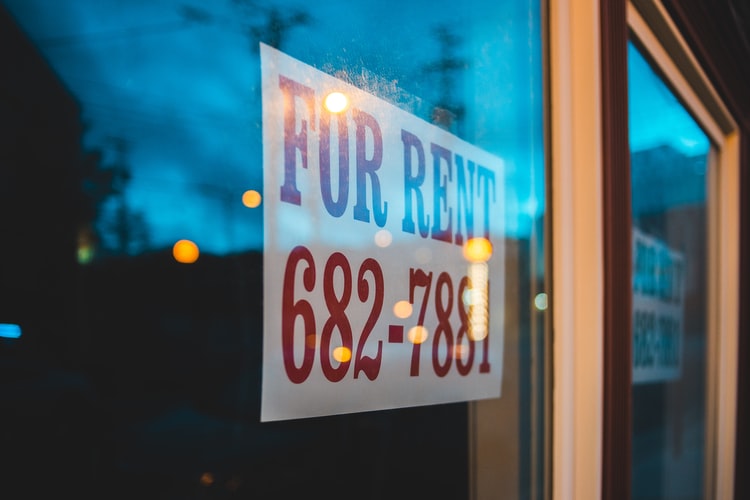5 Affordable Ways To Upgrade Your Rental

You can renovate your rental. Whether you’re renting an apartment or a home, we’ve got landlord-approved upgrades for you. Best of all, some of these renovations can be inexpensive or even free.
My wife and I have renovated two rentals in the last six years. Follow our guide to find out how we’ve stayed under budget for these landlord-friendly changes.
What You Need To Know Before Getting Started

It’s important to state the obvious. We don’t own the buildings we rent and renovate. In any renovation, we ensure that any changes meet three criteria.
First on the list, and we can’t say this enough: always check with your landlord before starting a project. It’s their property, and they decide what is and isn’t allowed.
Second, we make sure the repairs are affordable. There’s no reason we should spend much of our money fixing up someone’s place for free. When owners renovate, they’re investing in their property.
They’re spending money to improve the value of their space. However, fixing up someone else’s property doesn’t help us in the long run.
Thirdly, we remember that we will move one day. We signed a lease, but there’s no guarantee we can renew our lease at the end of the year. Any change we make needs to be worth the knowledge that we may only be able to enjoy it for a year or less.
1. Get Reimbursed By Your Landlord
Some renovations can be a win-win scenario. You get a nicer home to live in, and your landlord gets investment in their property.
We know our current landlord personally. He’s an old family friend of my wife. Before moving, we talked to him about renovations.
We worked out a deal with our landlord that if we do renovations, he’ll reimburse us for the cost of materials on our next rent payment.
Of course, there are rules. Our landlord has to approve any renovation we do. He also has the final say on which materials we purchase. After all, he wants to ensure he pays a fair price.
In the last two years, there’s been one time that we disagreed on which materials to purchase. We met in the middle, and our landlord covered the equivalent cost of the materials he thought was fair. We covered the remainder. Then, we could retile the entire bathroom for a little under $200 out of our pocket.
So long as all parties are on board, this can be mutually beneficial. Since our landlord only paid for the cost of materials, he saved money. It was also beneficial because the renovations were free or nearly free for us.
All we lost was the time and energy it took to make the changes. That’s fine with us, though, since we got to reap the immediate benefit of living in a newly renovated space. Plus, we’re both crafty individuals. We actively enjoy working around the house.
When deciding on which project to start, we suggest looking into which styles are hot right now. You want to find projects that you’ll enjoy, which will also help provide the most value for your landlord.
2. Stick To The Essentials
You don’t have to renovate the whole place. You won’t be living there forever. Instead, settle on updating the pieces that are most important to you. There are many options that are quick fixes to your biggest focus. Only change what needs to be changed.
Here are our fast tips for getting the biggest bang for your buck based on your needs:
- Entertaining guests? Focus on the kitchen, living room, and bathroom. These are the three rooms your guests are likely to see the most. Keep things simple.
Build a self-standing entertainment station for the living room and add a stick-on backsplash to the kitchen and bathroom. With these changes, you can quickly modernize your apartment.
- Do you like to cook? Focus on the kitchen and dining room. After all, you’ll likely spend the most time in these two rooms.
Switch out the light fixture in the dining room and create a nail-free, self-supporting bar for the wall cutout. An at-home bar complete with bar stools will make your space feel more elegant.
- Are you focused on yourself or your relationship? That’s good. According to Stanford Daily, focusing on yourself and your needs is so important. Pay attention to your bedroom and bathroom to create your own unique space.
Paint one accent wall in your room and add floating shelves to display some of your favorite decor. Cover your bathroom counter with marble paper to refresh it.
3. Watch Your Spending
Plan well and watch your spending. It sounds obvious, but a simple mistake we made almost cost us a lot.
We got permission to redo some of the landscaping out front in our current rented house. So, we decided to rush and buy all the items at once to do it over a long weekend.
We had plenty of food in the fridge, but after buying all the new plants and gardening materials, our bank account was pretty low.
A few days before we got started, a friend strongly recommended we get the land surveyed first. We had materials arriving in a few days, but we had to book a land surveyor and pay them upfront before then.
I ended up having to borrow money to pay him. It was a $28 loss, but I think it was a good decision because we found out our plan would have been over the property line and could have disrupted a gas line in the process.
That was our mistake. Even though we had enough money to order all the materials, we didn’t plan our time well, which cost us money. Learn from our mistakes and plan your renovation well.
4. Look Into Items That Can Move With You
Some renovations aren’t permanent. They have moved with us from space to space. Since we change back our rentals before moving out, we often don’t have to get approval for these changes.
Our last rental was an apartment. They were a little stricter about what could and couldn’t be changed. We didn’t have a reimbursement program set up with them. Instead, their rule was that any change that was made had to be changed back before leaving.
Four common items in the house are easy to switch out and have a big impact. Best of all, these items could all be transferred with us to our next rental.
Fix the lighting first
The first one on the list is light fixtures. Switching out light fixtures is incredibly easy. At our old apartment, we switched out the outdated dining room light for a new modern chandelier.
It was a focus point for the room and often a conversation starter when we had guests. A week before moving out, we switched out the light fixture again and returned the original one. We followed a guide to switch out the lights both times.
Fixing the door handle is a must
Door handles were next on the list. Believe it or not, our bathroom didn’t have a lock, which wouldn’t work when we had family and friends over.
We went to Lowe’s and bought door handles with a lock for our bedroom and bathroom. We stored the original handles and screws in a drawer until we needed them again.
When we moved in, our kitchen had outdated cabinet doors. We prefer a more open look, so we removed some cabinet doors.
We covered the front edges of the cabinets with Washi tape of the same color. The tape blended nicely, and we could display our plates and glasses. We put the cabinet doors back on before moving out.
Believe it or not, outlet switch plates can greatly impact a room. We bought some navy blue covers, which were the perfect accent on our white walls. So long as you keep and reinstall those items before leaving, you can take them with you to your next place.
5. Get Creative And Save On Material Costs
In our last apartment, we couldn’t paint unless we wanted to paint before moving out. That means we would have had to pay for paint twice. Instead, we just invested in stickers. We found inspiration online.
We chose unique styles that matched the theme of the room and the color of our decorations and furniture. When removing the stickers, we recommend going slow and being very careful.
Use what you already have lying around. A few years ago, we lived in an apartment with thin walls. Instead of buying new materials, we used what we had.
We moved a bulky bookshelf against the shared wall to help block out some sounds. We hung up tapestries and lined the backside with throw blankets held up by binder clips.
The tapestry created an accent piece on the wall, and the fabric helped muffle noise. Over time, we collected egg cartons and placed them behind the bookshelf and tapestry to help absorb even more sound.
Wait for big purchase items to go on sale. Most renovation projects happen in the summer and fall. Expect renovation and hardware prices to decrease towards the end of winter.
Look into sourcing your materials from reused and traded items. Check out sites like recycle.net to see which options they have.
Stay Smart About Your Renovations
Renovations aren’t just for homeowners. You can do them for your rental spaces as well. You just have to be smart about how you go about them.
With any renovations on rented space, you want to ensure you don’t cheat yourself or your landlord out of value.
Upgrading your space doesn’t have to cost a lot. Most of our projects never cost us more than $200. Regardless of the dollars spent, our projects were always worth a year of enjoyment, even if we got to enjoy them longer.
Hopefully, this guide will help you renovate your rented space. You deserve to enjoy your home fully without paying an arm and a leg.
You May Also Like:











Leave A Reply